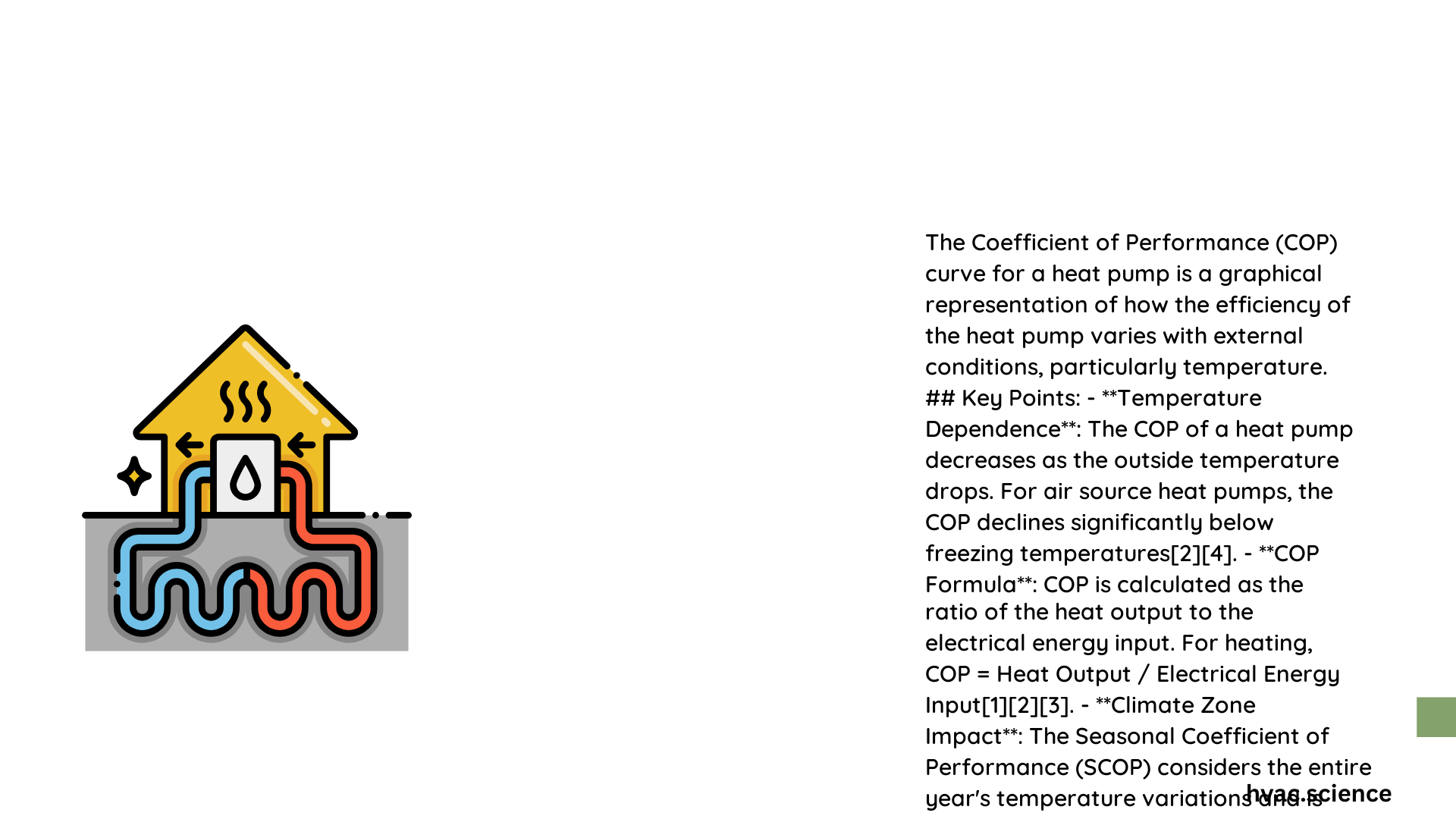The Coefficient of Performance (COP) curve represents a critical metric in heat pump technology, revealing the complex relationship between input energy and thermal output across varying operational conditions. This comprehensive analysis explores how temperature differentials, system design, and environmental factors dynamically influence heat pump efficiency, providing engineers and energy professionals with essential insights into maximizing thermal energy transfer and system performance.
What Defines the COP Curve for Heat Pumps?
Understanding Performance Characteristics
The COP curve represents the graphical representation of a heat pump’s efficiency under different operational conditions. It illustrates how the Coefficient of Performance changes with temperature differentials, providing critical insights into system performance.
Key Performance Metrics
| Temperature Range | Typical COP | Performance Indicator |
|---|---|---|
| 0°C to 7°C | 4.2 – 4.8 | High Efficiency |
| -7°C to 0°C | 2.8 – 3.5 | Moderate Efficiency |
| Below -7°C | 2.0 – 2.5 | Reduced Efficiency |
How Do Temperature Differentials Impact COP?
Temperature differentials play a crucial role in determining heat pump efficiency. As the gap between heat source and heat sink increases, the COP decreases proportionally.
Factors Influencing COP Curve
- Temperature Range: Smaller temperature differences improve efficiency
- Heat Source Quality: Ground source vs. air source variations
- Refrigerant Characteristics
- System Design Specifications
What Mathematical Principles Govern COP Calculation?
The fundamental COP calculation follows the thermodynamic principle:
[
\text{COP} = \frac{|Q_{\text{useful}}|}{W_{\text{input}}}
]
Where:
– ( Q_{\text{useful}} ): Heat energy transferred
– ( W_{\text{input}} ): Work required to transfer heat
Why Do Heat Pump COPs Vary?
Operational Condition Influences
- Ambient Temperature
- Lower outdoor temperatures reduce COP
-
Ground source systems maintain more stable performance
-
Flow Rates
- Higher flow rates can improve heat transfer efficiency
-
Optimal pressure differentials enhance overall performance
-
Refrigerant Selection
- Different refrigerants exhibit unique performance characteristics
- Modern refrigerants focus on environmental sustainability
How Can COP Curve Performance Be Optimized?
Strategic Improvement Approaches
- Minimize Temperature Differentials
- Implement Advanced Heat Exchanger Designs
- Use High-Efficiency Compressors
- Regular System Maintenance
Practical Performance Example
Consider a ground source heat pump:
– Outdoor Temperature: 7°C
– Flow Temperature: 35°C
– Resulting COP: Approximately 4.8
When flow temperature increases to 55°C, the COP drops to around 2.94, demonstrating the direct relationship between temperature and efficiency.
Technical Considerations for Advanced Analysis
Seasonal Performance Factor (SPF)
The SPF provides a more comprehensive efficiency metric by considering annual performance variations, offering a holistic view beyond instantaneous COP measurements.
Emerging Technologies and Future Trends
- Artificial Intelligence Integration
- Advanced Predictive Maintenance
- Enhanced Refrigerant Formulations
- Improved Thermal Energy Storage
Conclusion

The COP curve represents a dynamic and complex representation of heat pump performance, requiring nuanced understanding of thermodynamic principles and operational constraints.
